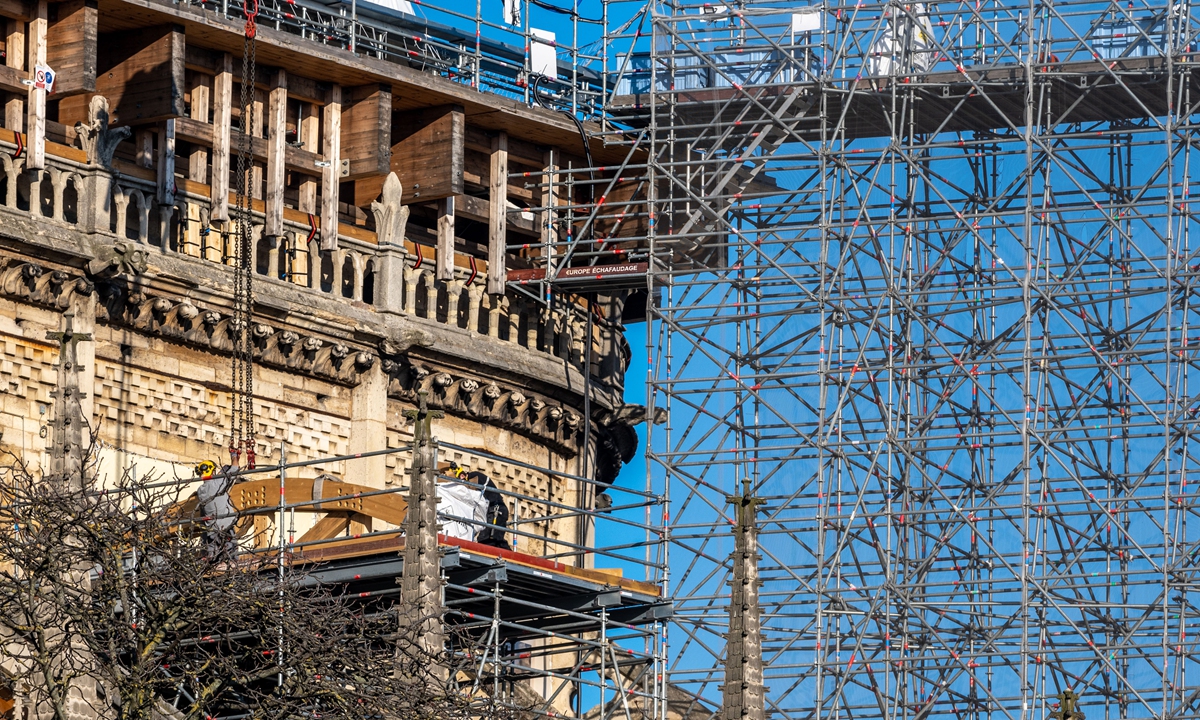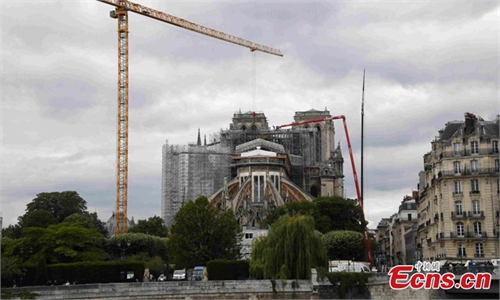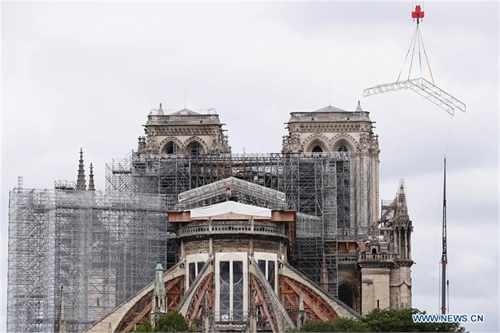
Atmosphere on the works site of Cathedral Notre-Dame de Paris, in Paris, France, on March 1st, 2021, almost 2 years after the fire that destroyed part of the monument in April 2019. Photo: VCG
Paris authorities have been accused in a legal complaint of failing to safeguard the health of people living near Notre-Dame cathedral due to lead pollution from a devastating fire two years ago.
Local families along with the Paris branch of the CGT trade union and the anti-pollution association Henri Pezerat have filed the complaint alleging city and public health authorities endangered lives.
"Despite the scale of the fire and knowledge about the risk of pollution and contamination... no precaution in particular was taken by the authorities involved for more than three months after the fire," according to a copy of the complaint seen by AFP.
It says 400 tons of lead from the roof of the Gothic masterpiece melted or were dispersed as micro-particles over the French capital during the blaze on April 15, 2019.
"Children [in creches and schools], neighbors, and workers have clearly been exposed to the risk of lead" pollution, the complaint adds.
The square in front of the cathedral, which is being rebuilt, was closed again to the public in May after tests revealed high concentrations of toxic lead particles.
The complaint says the city, run by socialist mayor and presidential hopeful Anne Hidalgo, withheld information from school directors and failed to act promptly.
While Notre-Dame's spire collapsed and much of the roof was destroyed, the efforts of firefighters ensured the great medieval edifice survived the fire.
Investigators have yet to determine the cause but say an accident caused by a short circuit or discarded cigarette butt remains the most likely explanation.
AFP



